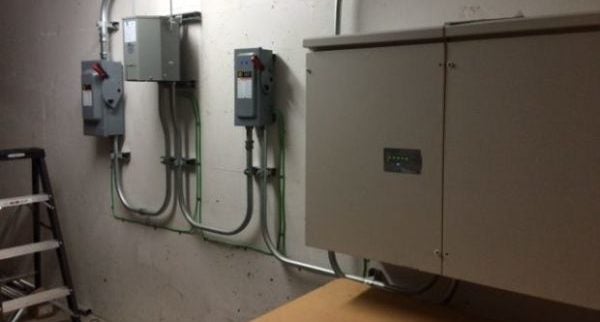Making energy storage work in Virginia

Virginia is not yet a hub of energy innovation. We currently rank 30th in installed solar capacity. It lacks enforced renewable energy targets. It offers no statewide renewable energy technologies or battery storage system incentives. Despite these real barriers, there is still an opportunity to innovate in Virginia.

Virginia offers a lot of opportunity for utilization of energy storage systems. One opportunity is for increased resilience through battery backup systems for both homes and businesses. This is particularly true in the Hampton Roads region, the nation’s second most vulnerable area to climate change induced severe storms and flooding. Batteries coupled with solar can keep the lights on during these storm events. The second opportunity is through the reduction of ‘demand charges’ and the provision of grid ancillary services for non-residential customers.
Battery systems to reduce demand charges
Virginia’s non-residential utility customers pay a relatively low base price for electricity. A substantial portion of the bill however, comes from a demand charge. Demand charges assign a monthly fixed charge based on a facility’s highest instantaneous electricity usage during a 15 to 30 minute interval. In other words, reducing a facility’s peak usage during a short interval can make for substantial bill savings over the course of the whole year. Virginians incur some of the highest demand charge rates in the country. This differential between standard prices and peak prices can contribute to a pricey electricity bill. But it also creates a significant potential for savings through energy storage management.
Battery systems to provide electric grid ancillary services
Virginia’s other advantage is that it belongs to the PJM regional electric grid. PJM is a regional transmission organization. Its role is to manage the transmission of electricity in the mid-Atlantic region. Per the transmission rules of states in the PJM, battery systems that are large enough can sell their storage services to the PJM grid operator. They act like mini-power plants to help maintain grid reliability and power quality. These systems are financially compensated for the services they provide. The ability to engage in these transactions enhance the value proposition of storage systems in Virginia.
One company working in the energy storage space in Virginia is Tumalow Energy Ingenuity. It is a software company that pairs physical energy storage infrastructure, (i.e. batteries), with cloud-based optimization software.
This pairing allows the batteries to synchronize with a building’s peak energy usage to reduce demand charges as well as ensure power quality and reliability. In addition to using batteries when they are most needed, say during an outage, Tumalow’s clients use their batteries to reduce the peak usage that spurs high demand charges.
The company’s business model is a perfect demonstration of the way technology is developing along with changes to the way our electric grid works. No longer are utility customers passive users of electricity. Rather, we have the opportunity to produce and store our own electricity.
Tumalow is just one of the hundreds of advanced energy companies that have grown in Virginia, a market often hostile to new energy development. This growth is a clear demonstration of the overwhelming consumer demand for a fairer electricity system and proof that Virginia can be a clean energy hub.
